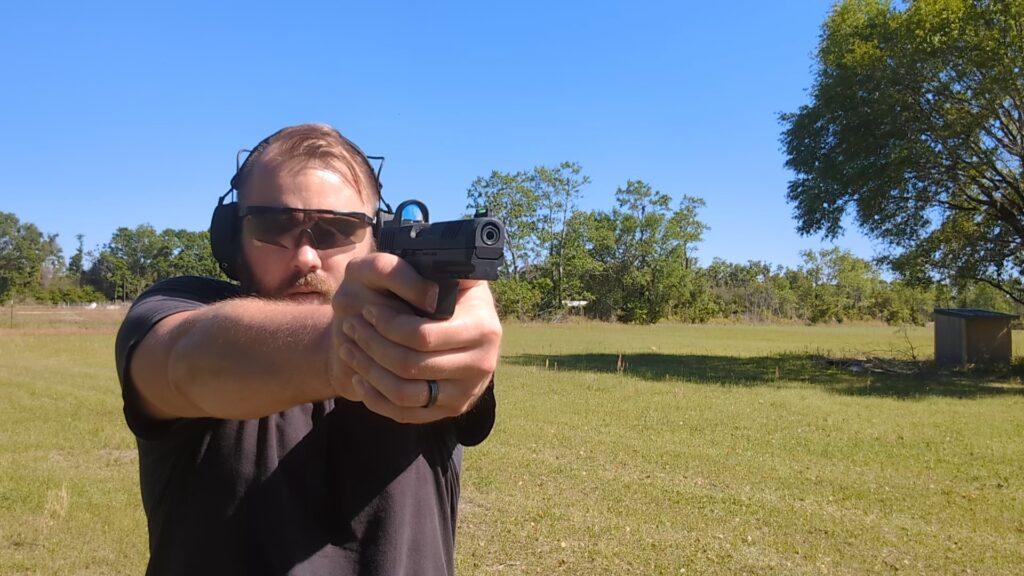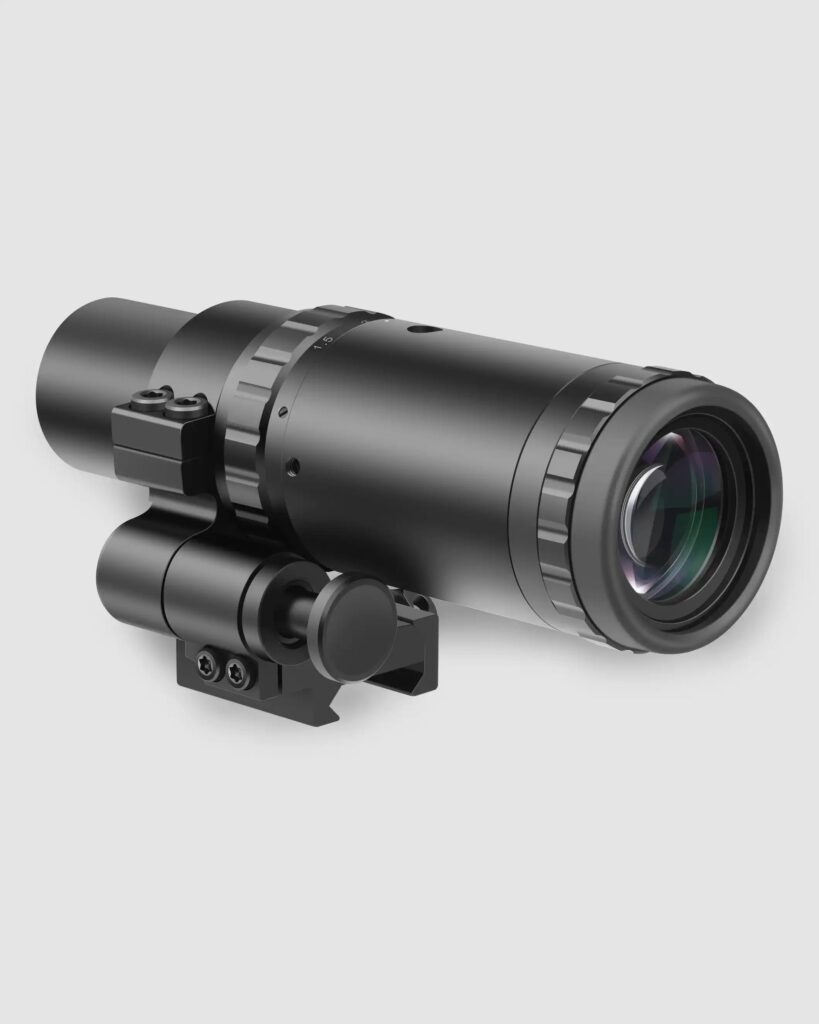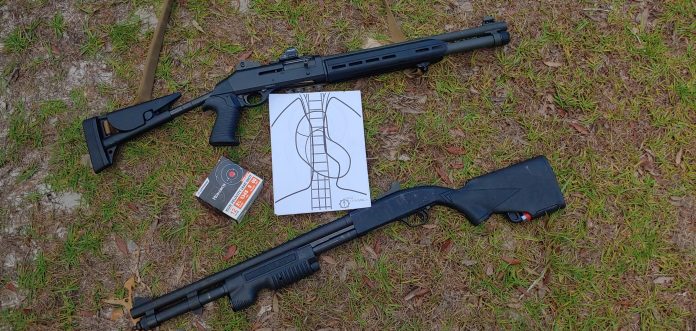10/10 I am sharing this video for this moment.
Would you just look at that glorious moustache. Revel in its classic buddy cop movie vibes.
That covered, the subject of the video is also a rifle I’ve been trying to get my hands on to go with our MM11.
Advertisement — Continue Reading Below
During the battle rifle blitz of the 50’s and 60’s post WWII, after the US had strong armed the NATO allies into adopting ‘totally not 30.06’ by promising to use the FAL, and then going with the ill tempered M14 instead, Germany also looked at the FAL and said, “Yes, this is very nice. But I like this instead.”
After saying this they pointed to the prototype STG45, which took all they had learned on the STG44 but used the later to be famous roller delayed recoil operation in the place of traditional gas operated system.
What resulted was the G3, which replaced the G1 FAL, and was an easy and inexpensive to export rifle that helped H&K earn its name. Yes, once upon a time the reason the roller-delay guns were produced was because they were cheap. Don’t think about it too hard while looking at the H&K SP5 price tag.
Advertisement — Continue Reading Below
But you can consider it when looking at the PTR91. This US made reproduction, on the HK specs, of the 7.62 German battle rifle has been leading the industry on an affordable and reliable battle rifle for years, and even in today’s price market they are still the least expensive and highest quality way to get into a 7.62 fighting gun.
I would look askance at any AR pattern or FAL pattern 7.62 that costs what the PTR does, but I have no such qualms on the PTR. Even with a modern M-LOK handguard and optics rail, the PTR91 MSRPs under $1,400. Following typical retail pricing logic the cost will likely be just over $1,000 in most instances for a modernly furnished 7.62×51 NATO rifle, sporting a 16″ or 18″ barrel and freefloated. Magazines are cheaper than PMAGs too in many spots, including the new production KCI’s.
Will it be as accurate as a tuned KAC or LMT?
Advertisement — Continue Reading Below
No.
Not it’s job. It’s job was and is to serve as a 7.62 fighting rifle of acceptable accuracy, rugged reliability, and easy maintenance.
Will it be heavy?
Advertisement — Continue Reading Below
Yep.
Grow stronger, it isn’t that heavy. Even with a chonk optic like an LPVO, a light, and a loaded magazine, I doubt it breaks 15lbs. If you’re keeping it trim using a dot it is probably closer to 11lbs, loaded. The weight also helps eay recoil, not an insubstantial consideration on a .308 WIN gun.
All this to say what I suspect Mike says in the video, this is a viable fighting rifle to this day for circumstances where a 5.56 might not be. Those circumstances could be supply, environment or terrain, threat type, or just simple preference. I, once upon a time, poo pooed the 5.56 as a mere poodle shooter and waxed poetic on the superiority of the 7.62 as a ‘Rifleman’s’ cartridge… because of reasons.
Advertisement — Continue Reading Below

Now my thoughts on 7.62 have soured, but nothing about it that I liked do I now dislike. I just discovered we had the knowledge and ability to shoot superior ammunition and we didn’t because we’re stubborn. That part of 7.62 NATO’s existence annoys me, the rest of the round’s performance is fine. It is actually a really good round at the distances, about 100 or 200 yards further, that 5.56 covers and it delivers substantially more energy to the target per trigger pull.
Where 5.56 says get to cover and stay there, 7.62 in the same range envelope can often declare, “F*$& your cover!” and break it apart.
Advertisement — Continue Reading Below
In short, were I without a rifle and needing a rifle and the PTR91 was available, it would be grabbed without hesitation or debate. If its a choice between rifles, it isn’t top of my list against modern platforms like the SCAR or MCX SPEAR by any means. In comparison, an M16A1 that happened to have a light on the handguard and red dot on the carry handle wouldn’t be my choice if a more modern 5.56 carbine was available either, I just wouldn’t feel undergunned with one.
I’d want to run rounds through it, like any rifle, to make certain in runs alright too.
You see, that is where I believe we have a failure in certain communications about preferences and capabilities.
Advertisement — Continue Reading Below
If given my preference, I will choose certain rifles like the SCAR 16/17 or Tavor X95/7. I personally like those rifles quite a bit and have spent a bunch of time shooting and training on them. I will also choose certain optics I like and lights I like, if given access to night aiming solutions like lasers I will have preferences there too.
But I don’t judge the capabilities of a system based upon my preferences, I do it based upon if it can do the job I am asking of it and how well. It may suffer from limitations but unless those limitations prevent the rifle from doing the things that I need it to do that isn’t deal breaker.
So I judge firearms in a vacuum. Where the other option is no rifle or no handgun, how well does this do the thing I need?
Advertisement — Continue Reading Below
“But Keith, any rifle is better than no rifle when you need one!”
True. But that isn’t going to stop me from pointing out the deficiencies or limits of a given rifle even if it is otherwise capable. The PTR91, like the whole H&K roller locked series, suffers from being designed for a category of humans whose hand size doesn’t exist, for example. Andre the Giant might’ve been able to smoothly move the selector on a G3 or MP5, but I can’t without breaking my firing grip, getting an extended lever, or replacing the housing entirely with something like the Magpul.
A lever action .357 with a dot and a light is better than a sharp stick too and capable in a fight, but it doesn’t have the staying power of any of the H&K roller locks.
In short, two ways to judge a gun: Objectively and comparatively.
Objectively is, ‘Does the rifle do the job I need it to do?’
Comparatively is, ‘Does the rifle do its job better or worse, especially for me and my preferences, than another rifle?’
I suggest judging a gun objectively first.















